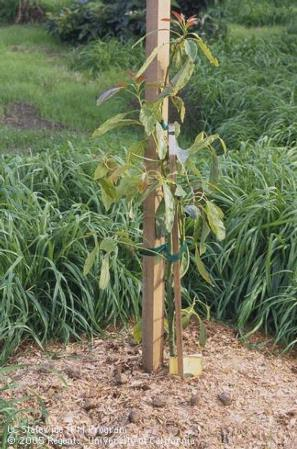After the fires, the question has come up of whether an orchard should be replanted or topworked in the field, possibly to a new variety. This has been an issue in the past and was addressed in a little study nearly 20 years ago. The study still bears relevance today and applies to both avocado and citrus. The availability of avocado trees for replanting is in serious short supply, so replanting may not be an option at this point.
There are many changes going on in the citrus industry and one opportunity is the conversion of an orchard to another variety of citrus. If this is a consideration, then the question becomes one of whether the orchard should be topworked or replanted with new nursery trees. If the trees are healthy and under 20 years of age (it is possible to topwork older trees) and the new scion is compatible with the interstock or rootstock, then topworking can come into production sooner than a new replant. If the planting density needs to be changed or serious soil preparation or a new irrigation system needs to be installed, then replanting might be the preferred choice.
The chance to convert is also dependent on the availability of new trees and budwood. New varieties can often be in short supply. It's best to make sure that for either option that the material is there. For topworking, T-budding is more conservative of material than stick grafting. If topworking is chosen, then it must be decided whether to graft the scaffold branches or the stump. Stump grafting makes for a lower tree, but scaffold grafting reduces the risk of losing the topworked tree from damage to the graft from birds, pests, wind or frost.
It is often assumed that topworking is cheaper than replanting, but as the following example shows, it probably is not. In Santa Paula, ‘Olinda' Valencias on ‘Carrizo' rootstock were converted to scions ‘Allen' Eureka lemon, or ‘Powell' late navel. In 1998 and 2000, the ‘Olinda's were interplanted with either ‘Allen' on ‘Macrophylla' or late navel ‘Powell' or ‘Chislett' (on either ‘Carrizo or ‘C-35' rootstocks). The ‘Olinda's were topworked in 2002 and 2003 to one of the new scions. In a few cases, ‘Allen' was stump grafted, but most trees were scaffold grafted.
Several steps are required for topworking that will ensure success. These are listed below:
• Get a reputable person to do the work.
• Time of year is critical for grafting. Spring is best.
• Leave a nurse limb.
• Decide to stump or scaffold graft.
o Stump grafting requires only 3 – 4 buds or sticks
o Scaffold grafting requires 2 buds per scaffold. Consider winds since even one-year old unions are very tender.
• Sequence of events
o Line up budwood
o Remove top of tree and stack brush
o Whitewash trunks
o Paint cutoff surfaces
o Insert grafts
o Wrap grafts with plastic tape
o Place white paper bag over grafts and tape in place
Later
o Keep after ants and snails
o Shred brush
o Remove bags when shoots start growing through them.
o Bi-monthly, in first year, brush out water sprouts. Less often in the next 2 years
Much of this work can be contracted with the grafter, who usually assures some level of performance, something like 90% take. It is up to the grower to ensure that pests do not take out the grafts.
The costs of topworking are associated with the costs of the budwood (as much as $3 per tree), the act of grafting (depending on stump or scaffold, $8-10 per tree) and water sprout removal. Sprout removal is six times in year one, eight times in year two and only four times in year three. At a labor rate of $12 per hour, sprout removal costs $7.20 per tree.
A like for like comparison of topworking versus replanting based on 2002 data is shown below.
So in the case of both the lemon and navels it costs a bit more to topwork, but the results are earlier production. Here the topworked trees gain the economic advantage. For example, if cultural costs were $1000 per acre per year (20 by 20 ft. spacing) and, conservatively, two years are saved, the maintenance savings per tree would be $18. In the above study the time advantage appears even greater. Three-year old topworked lemons produce about the same as 6-year old replants. Two year old topworked navels have a significantly larger canopy than six-year old replant navels and appear to have about the same fruit set for the coming year.

